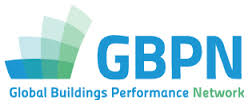New Briefing Paper by the Economist Intelligence Unit and the Global Buildings Performance Network Identifies Key Strategies for Scaling Up Efficiency
In the United States, buildings account for 41 percent of primary energy consumption, more than the transport or industrial sectors. Tackling rising energy consumption in U.S. buildings will require a more coordinated and coherent approach to energy efficiency codes and regulation, one that is more focused on retrofits—where most potential gains lie. It’s also crucial to develop new financing mechanisms that help institutional investors assess the risks associated with energy-efficient projects.

These are the key findings from an Economist Intelligence Unit paper, Achieving scale in the US: A view from the construction and real estate sectors, commissioned by the Global Buildings Performance Network (GBPN) in collaboration with its U.S. hub, the Institute for Market Transformation (IMT) and in partnership with the World Business Council for Sustainable Development (WBCSD).
Other findings include:
Energy efficiency regulation in the U.S. is patchy, confusing, and inconsistent. Building codes and other policies are too focused on new builds and often differ between states—and sometimes within them. As a result, the majority of U.S. companies manage energy efficiency at the building level rather than at the portfolio level.
Innovative financing offers opportunities to achieve greater scale. Aggregating projects across and within sectors through green banks and large mortgage financing organizations allows for a more efficient allocation of capital and would likely attract large institutional investors.
Both the public and the private sectors must work to address the data challenge. Data on energy efficiency performance is limited, unshared, and often inconsistent between measurements. Institutional investors require standardized data on the energy and financial performance of projects.
Co-benefits of energy efficiency retrofits include higher occupancy rates and higher tenant retention. While many of these co-benefits like reduced carbon emissions have yet to be priced into the market, some—for example, greater comfort—are almost immediately tangible for both companies and their customers.
“The challenges to scaling up energy efficiency in the U.S. are different from many other countries,” said Jayson Antonoff, U.S. Director of the GBPN. “Most building codes and regulations here are adopted and enforced at the local level, creating a fragmented and inconsistent policy landscape.”
Antonoff continued: “Though there is a great potential for energy savings in retrofits, this research by the EIU—and the GBPN’s own discussions with high-level leaders in the public and private sectors—also points to the need for more standardized and accessible data to make the case for energy efficiency, and the importance of the often overlooked side benefits or ‘co-benefits’ of efficiency, such as improved comfort and productivity.”
Achieving scale in the US is available free of charge on the websites of the GBPN and IMT. It can also be downloaded here.
The GBPN has also released a short video to accompany the briefing paper, “Investing in Energy Efficiency in Buildings” (view on YouTube).
[source: http://feeds.importantmedia.org/~r/IM-greenbuildingelements/~3/8XI0jns4HXU/]

Leave a Reply
You must be logged in to post a comment.